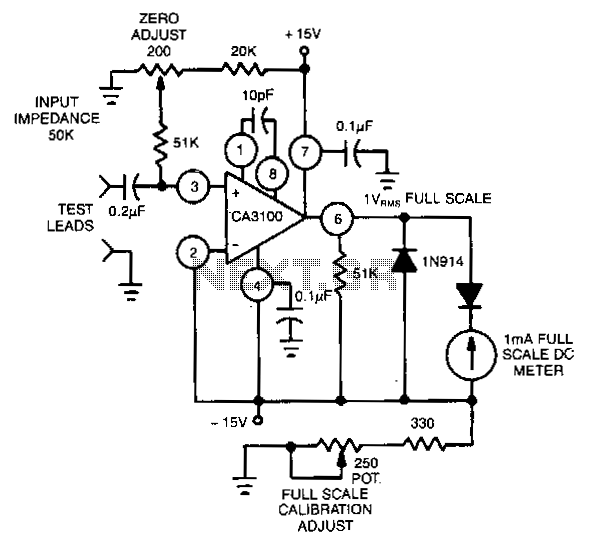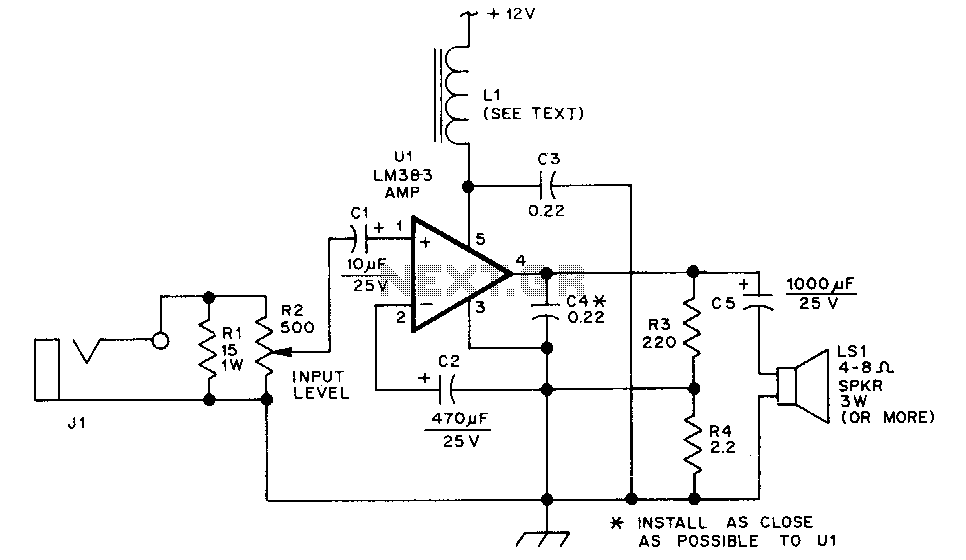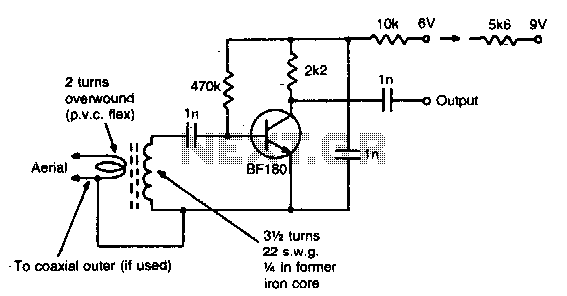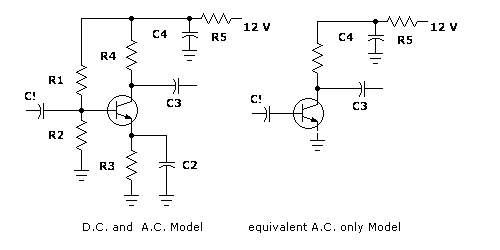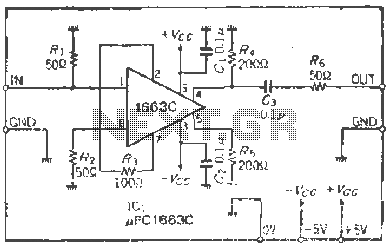
200 MHz Cascade Amplifier
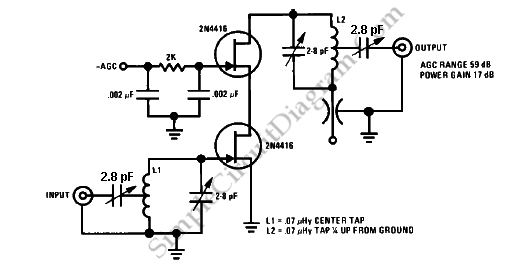
The 200 MHz JFET possesses the following characteristics: 1. Low crossmodulation 2. High large-signal handling capability 3. No requirement for neutralization 4. Automatic Gain Control (AGC) managed by adjusting the biasing of the upper.
The 200 MHz Junction Field Effect Transistor (JFET) is designed for high-frequency applications, showcasing several key features that enhance its performance in various electronic circuits. The low crossmodulation characteristic is particularly significant, as it minimizes signal distortion and interference between channels, making it suitable for communication systems where signal integrity is paramount.
The large-signal handling ability of the JFET allows it to process significant input signals without distortion, which is critical in applications such as RF amplifiers and mixers. This capability ensures that the device can effectively amplify strong signals while maintaining linearity, thus improving overall system performance.
The absence of a neutralization requirement simplifies the design and implementation of circuits utilizing this JFET. Neutralization is often necessary in high-frequency amplifiers to counteract unwanted feedback that can lead to instability. By eliminating this need, the JFET can be integrated into designs with fewer components and reduced complexity.
Furthermore, the Automatic Gain Control (AGC) feature, which is controlled by biasing the upper, allows for dynamic adjustment of gain in response to varying input signal levels. This is essential for maintaining consistent output levels in applications where signal strength may fluctuate, such as in radio receivers or audio processing systems.
In summary, the 200 MHz JFET is a versatile component well-suited for high-frequency applications, characterized by its low crossmodulation, robust large-signal handling, ease of integration without neutralization, and effective AGC capabilities. These features make it an excellent choice for engineers designing modern electronic circuits that require reliability and performance.The 200 MHz JFET has same features below: 1. Low crossmodulation 2. Large-signal handling ability 3. No neutralization 4. AGC controlled by biasiing the upper.. 🔗 External reference
The 200 MHz Junction Field Effect Transistor (JFET) is designed for high-frequency applications, showcasing several key features that enhance its performance in various electronic circuits. The low crossmodulation characteristic is particularly significant, as it minimizes signal distortion and interference between channels, making it suitable for communication systems where signal integrity is paramount.
The large-signal handling ability of the JFET allows it to process significant input signals without distortion, which is critical in applications such as RF amplifiers and mixers. This capability ensures that the device can effectively amplify strong signals while maintaining linearity, thus improving overall system performance.
The absence of a neutralization requirement simplifies the design and implementation of circuits utilizing this JFET. Neutralization is often necessary in high-frequency amplifiers to counteract unwanted feedback that can lead to instability. By eliminating this need, the JFET can be integrated into designs with fewer components and reduced complexity.
Furthermore, the Automatic Gain Control (AGC) feature, which is controlled by biasing the upper, allows for dynamic adjustment of gain in response to varying input signal levels. This is essential for maintaining consistent output levels in applications where signal strength may fluctuate, such as in radio receivers or audio processing systems.
In summary, the 200 MHz JFET is a versatile component well-suited for high-frequency applications, characterized by its low crossmodulation, robust large-signal handling, ease of integration without neutralization, and effective AGC capabilities. These features make it an excellent choice for engineers designing modern electronic circuits that require reliability and performance.The 200 MHz JFET has same features below: 1. Low crossmodulation 2. Large-signal handling ability 3. No neutralization 4. AGC controlled by biasiing the upper.. 🔗 External reference
